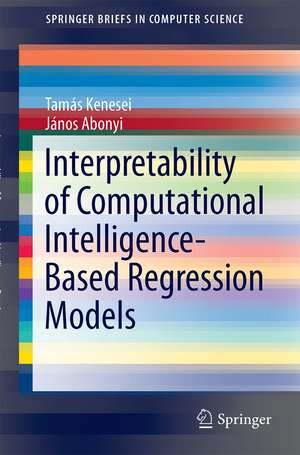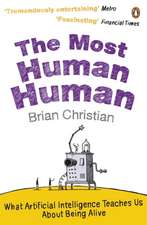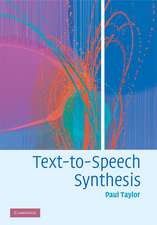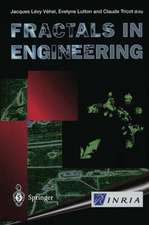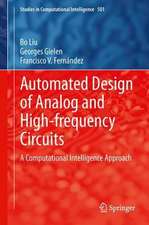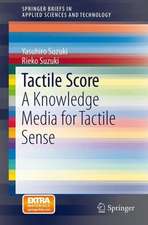Interpretability of Computational Intelligence-Based Regression Models: SpringerBriefs in Computer Science
Autor Tamás Kenesei, János Abonyien Limba Engleză Paperback – 10 noi 2015
The authors demonstrate real-world use of the algorithms with examples taken from process engineering, and they support the text with downloadable Matlab code. The book is suitable for researchers, graduate students and practitioners in the areas of computational intelligence and machine learning.
Din seria SpringerBriefs in Computer Science
-
 Preț: 475.83 lei
Preț: 475.83 lei - 20%
 Preț: 166.97 lei
Preț: 166.97 lei - 20%
 Preț: 325.63 lei
Preț: 325.63 lei - 20%
 Preț: 349.13 lei
Preț: 349.13 lei - 20%
 Preț: 302.48 lei
Preț: 302.48 lei -
 Preț: 381.81 lei
Preț: 381.81 lei -
 Preț: 446.47 lei
Preț: 446.47 lei - 20%
 Preț: 296.17 lei
Preț: 296.17 lei - 20%
 Preț: 335.65 lei
Preț: 335.65 lei - 20%
 Preț: 463.83 lei
Preț: 463.83 lei - 20%
 Preț: 323.00 lei
Preț: 323.00 lei - 20%
 Preț: 322.35 lei
Preț: 322.35 lei - 20%
 Preț: 321.85 lei
Preț: 321.85 lei - 20%
 Preț: 232.68 lei
Preț: 232.68 lei -
 Preț: 375.45 lei
Preț: 375.45 lei - 20%
 Preț: 323.00 lei
Preț: 323.00 lei - 20%
 Preț: 322.81 lei
Preț: 322.81 lei - 20%
 Preț: 324.17 lei
Preț: 324.17 lei - 20%
 Preț: 323.00 lei
Preț: 323.00 lei - 20%
 Preț: 322.17 lei
Preț: 322.17 lei - 20%
 Preț: 322.50 lei
Preț: 322.50 lei - 20%
 Preț: 323.34 lei
Preț: 323.34 lei - 20%
 Preț: 324.17 lei
Preț: 324.17 lei - 20%
 Preț: 323.46 lei
Preț: 323.46 lei - 20%
 Preț: 322.17 lei
Preț: 322.17 lei - 20%
 Preț: 322.02 lei
Preț: 322.02 lei -
 Preț: 341.50 lei
Preț: 341.50 lei - 20%
 Preț: 324.49 lei
Preț: 324.49 lei -
 Preț: 344.47 lei
Preț: 344.47 lei -
 Preț: 376.80 lei
Preț: 376.80 lei -
 Preț: 377.18 lei
Preț: 377.18 lei - 20%
 Preț: 324.17 lei
Preț: 324.17 lei - 20%
 Preț: 352.26 lei
Preț: 352.26 lei - 20%
 Preț: 321.32 lei
Preț: 321.32 lei - 20%
 Preț: 322.17 lei
Preț: 322.17 lei - 20%
 Preț: 324.17 lei
Preț: 324.17 lei - 20%
 Preț: 322.02 lei
Preț: 322.02 lei -
 Preț: 374.46 lei
Preț: 374.46 lei - 20%
 Preț: 320.21 lei
Preț: 320.21 lei - 20%
 Preț: 323.34 lei
Preț: 323.34 lei - 20%
 Preț: 324.17 lei
Preț: 324.17 lei - 20%
 Preț: 231.84 lei
Preț: 231.84 lei - 20%
 Preț: 294.95 lei
Preț: 294.95 lei - 20%
 Preț: 322.50 lei
Preț: 322.50 lei - 20%
 Preț: 323.46 lei
Preț: 323.46 lei -
 Preț: 374.08 lei
Preț: 374.08 lei -
 Preț: 408.23 lei
Preț: 408.23 lei - 20%
 Preț: 321.52 lei
Preț: 321.52 lei - 20%
 Preț: 323.34 lei
Preț: 323.34 lei - 20%
 Preț: 323.00 lei
Preț: 323.00 lei
Preț: 322.50 lei
Preț vechi: 403.13 lei
-20% Nou
Puncte Express: 484
Preț estimativ în valută:
61.71€ • 64.60$ • 51.06£
61.71€ • 64.60$ • 51.06£
Carte tipărită la comandă
Livrare economică 05-19 aprilie
Preluare comenzi: 021 569.72.76
Specificații
ISBN-13: 9783319219417
ISBN-10: 3319219413
Pagini: 80
Ilustrații: X, 82 p. 34 illus., 14 illus. in color.
Dimensiuni: 155 x 235 x 7 mm
Greutate: 0.15 kg
Ediția:1st ed. 2015
Editura: Springer International Publishing
Colecția Springer
Seria SpringerBriefs in Computer Science
Locul publicării:Cham, Switzerland
ISBN-10: 3319219413
Pagini: 80
Ilustrații: X, 82 p. 34 illus., 14 illus. in color.
Dimensiuni: 155 x 235 x 7 mm
Greutate: 0.15 kg
Ediția:1st ed. 2015
Editura: Springer International Publishing
Colecția Springer
Seria SpringerBriefs in Computer Science
Locul publicării:Cham, Switzerland
Public țintă
ResearchCuprins
Introduction.- Interpretability of Hinging Hyperplanes.- Interpretability of Neural Networks.- Interpretability of Support Vector Machines.- Summary.
Recenzii
“This book is very inspiring and provides many detailed motivating examples after each algorithm discussed. This helps theoretically oriented readers to understand the application scenarios, and helps applied readers to better understand the details and power of the algorithms. The book also provides four sections of useful appendixes on cross validation, orthogonal least squares, a model of the pH process, and a model of an electrical water heater.” (Xin Guo, Mathematical Reviews, September, 2017)
Textul de pe ultima copertă
The key idea of this book is that hinging hyperplanes, neural networks and support vector machines can be transformed into fuzzy models, and interpretability of the resulting rule-based systems can be ensured by special model reduction and visualization techniques. The first part of the book deals with the identification of hinging hyperplane-based regression trees. The next part deals with the validation, visualization and structural reduction of neural networks based on the transformation of the hidden layer of the network into an additive fuzzy rule base system. Finally, based on the analogy of support vector regression and fuzzy models, a three-step model reduction algorithm is proposed to get interpretable fuzzy regression models on the basis of support vector regression.
The authors demonstrate real-world use of the algorithms with examples taken from process engineering, and they support the text with downloadable Matlab code. The book is suitable for researchers, graduate students and practitioners in the areas of computational intelligence and machine learning.
The authors demonstrate real-world use of the algorithms with examples taken from process engineering, and they support the text with downloadable Matlab code. The book is suitable for researchers, graduate students and practitioners in the areas of computational intelligence and machine learning.
Caracteristici
Authors provide related Matlab code for download Valuable for researchers, graduate students and practitioners in computational intelligence and machine learning Real-world examples drawn from process engineering Includes supplementary material: sn.pub/extras
